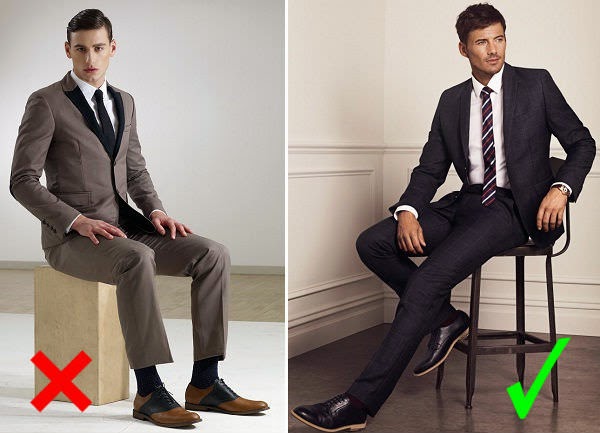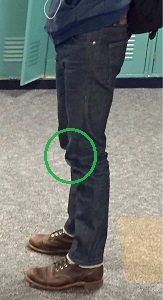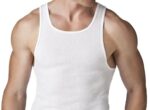How you take a seat, surprisingly, can really make a difference especially if you are in an important meeting, being interviewed for a job, or participating in a dressy occasion.
Still, good sitting etiquette is often disregarded from finding a job to dating, how and if you hitch your pants up can set the tone for your success.
This may cause you to grin, but don’t discount pulling up your pants and how to do so when sitting down.

Why Do Guys Pull Their Trousers Up Before Sitting?
Most men will hitch up pants before sitting down in a chair to be more comfortable during sitting. Pulling up your trousers also prevents the material your trousers are made from, from stretching or even ballooning over the knees.
What’s the Best Way to Sit Down When Wearing Trousers?
Ideally, you should be able to touch your chair or seat with your leg calves for security purposes. You don’t want to lose your balance and risk falling by coming up short when attempting to sit.
Pull up your trousers gently and then sit down slowly on the seat’s edge. If you need to sit for any length of time, move to the chair’s back in an elegant manner.

Why Do Trousers Get Baggy at the Knees?
When trouser knees sag, it’s usually due to the stretching of the fabric. When these areas of pants are repeatedly folded due to bending or sitting, fabric becomes loose.
Excessive bending causes the fabric to crease, and these creases stretch in turn. With this continual stretching, the pant fabric loosens and weakens, often ballooning.
Often when sitting for lengthy periods, the fabric will also be stretching, and fabric at the knees will also bunch up once you stand up.

Trousers with no elasticity in the fabric may stretch less than those with spandex or similar, however they also will not regain their shape as quickly when you stand.
If you have selected a pair of skinny cut pants you also may be less comfortable if there is no stretch added to the fabric, and they will remain baggy at the knees if the fabric does stretch from your sitting.
Fabrics that include a bit of stretch may offer a better solution when attempting to prevent bagging at the knees.
Other causes of baggy or ballooning knees include:
1.) Poor Fit
When pants are not the proper fit, whether too small or too large, baggy knees may develop. Pants that tend to be too tight will cause baggy knees even if your just bed your knee slightly when walking. Pants that are too big will generally bag throughout the entire leg.
2.) Wear
If a specific pair of pants has been worn a lot or cared for improperly particularly during laundering combined with continued bending will cause the pant fabric to weaken.
See also: Do Baggy Pants Make You Look Bigger?
Can the Bagging and Bunching of Fabric at the Knees Be Prevented?
There are a few ways that you can prevent the fabric of your trousers from becoming baggy in the knee area.
1.) If you must sit a lot, hitch up your trousers gently before sitting down. This will improve your comfort and protect the shape of your pant legs.
2.) Purchase pants made with quality fabrics. If you are buying a pair of casual trousers, consider purchasing a fabric blend that includes some elastic material such as lycra, spandex, or polyesters.
Low-quality materials may cost less at first but may also make it necessary to replace your pants more often, so you end up spending more money long term.
If you select pants that are completely non-stretch, consider the weight of the fabric. A heavier weight may tend to stretch less.
3.) Choose the correct style of trousers for your body type. Pants that are too loose or too tight will do you no favors and may contribute to fabric bunching at the knees.
Make sure when you try on your pants, to do at one squat. If you can’t, the pants are too tight and if your pants begin to slide on you when you stand back up, they are too big.
4.) Ensure proper care for your trousers. Overwearing them or over washing pants may cause them to stretch at the knees even if you do pull up your trousers before sitting. Follow the directions and any tips that the manufacturer may offer when laundering trousers.
Can Baggy Knees on Pants Be Fixed?
When dealing with baggy knees on denim or cotton trousers there are a few things you can do to reverse the situation.
In some cases, the pants may simply be too long, so shortening the pant leg may help. You can also ask a tailor if slimming down the leg shape will reduce bagginess.
Washing and drying is also an option in the case of cotton, but there is a risk that you will have shrinking in other parts of the trousers. You can attempt these steps to reduce bagging at the knees:
• Spray some fabric softener on knees and then wash your cotton or denim pants on a warm cycle.
• Turn pants inside out and place them in the dryer for approximately 20 minutes on a regular heat setting with a few other clothing items or towels.
• Launder your pants in cold water and air dry them.
When dealing with baggy knees in dress pants, it’s best to get advice from a professional tailor to protect your investment. It may be an easy and relatively inexpensive alteration.
The Bottom Line
It’s better to pull up your pant legs somewhat before sitting to protect your pants from weaking or stretching fabric in the knee area and to increase your comfort during sitting.
Also, avoid crossing your legs when you are sitting so that the tendency for the fabric to stretch in the knee area will be reduced.
Occasionally get up and move around to decrease the possibility of fabric ballooning. If baggy knees in trousers continue to be a problem, consider looking for a more relaxed cut in the proper size.







